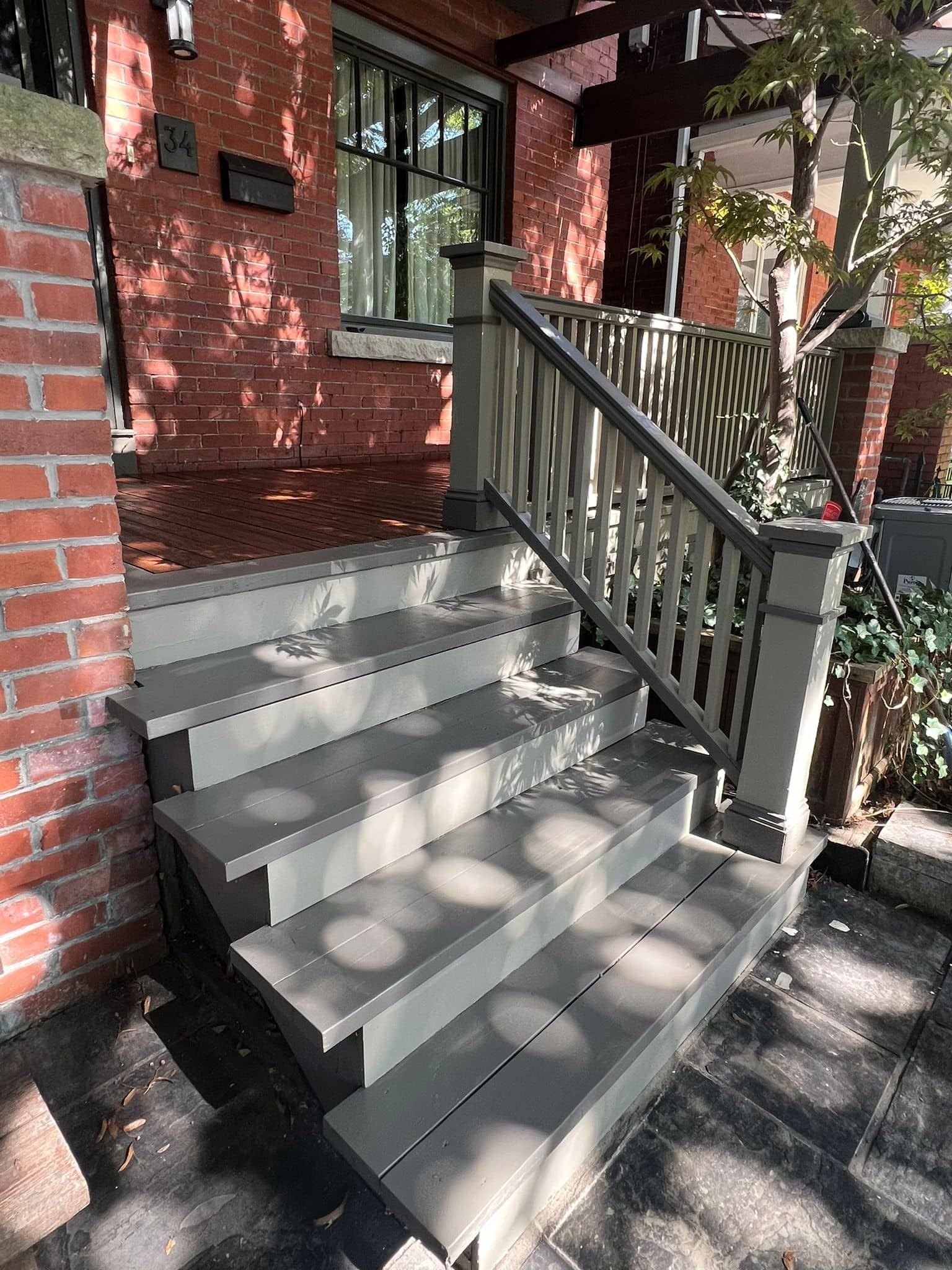Whether you’re looking to revamp your home’s wood siding or are ready to give your fence a makeover, there are two main options available: paint and stain. To the untrained eye, these two treatments may look very similar but they have different qualities which make them more suitable for certain projects than others.
Paint is a liquid coating that provides coverage and colour; while stain is designed to penetrate into the grain of the wood, providing a natural-looking finish that can still protect against damage from moisture and pests. Both have their advantages and disadvantages depending on the type of structure you’re working with – understanding these differences will help you determine which product is right for your project.
Below, the professional home painters at Encore Painting Toronto have outlined the main differences of both options so you can make an informed decision for your next home renovation project.

Advantages of Exterior Wood Stain
One of the biggest advantages of using exterior wood stain is its ability to protect and preserve your wood siding from moisture, sun damage, and pests. It also penetrates deep into the grain of the wood which can help prevent rot or decay over time.
In addition to providing protection to your home’s exterior, wood stain provides a natural-looking finish that enhances the beauty of your home without compromising on that natural wood aesthetic. The semi-transparent nature of stains allows for flexibility when it comes to colour choices as well – you can choose a shade that complements your home’s aesthetic while still providing adequate coverage.
Advantages of Exterior Paint
A major benefit of paint is how customizable it is. You can choose from a range of different sheens for extra gloss or matte finishes, as well as an array of colours depending on the type of paint you choose. Unlike wood stain, paint has a thick consistency, meaning fewer coats will be needed to cover your home. When applied correctly and prepped properly, a good exterior paint job provides a protective barrier that can last for years without needing to be refinished.
Many paints now come with additives that resist mildew and algae, making them ideal for areas with high humidity or moisture. They also provide an additional layer of insulation to your home, helping to keep it cool in the summer and warm in the winter. Additionally, some exterior paint options offer UV protection which can prevent sun damage and fading over time.
Factors to Consider with Wood Stain vs. Paint
There’s no one-size-fits-all answer when it comes to choosing between wood stain and paint for your home’s exterior. But, there are a few factors you can take into consideration to help make the decision easier.
Let’s take a look at some important considerations for both options:
Maintenance Required
A key consideration when deciding between paint or stain is how much maintenance will be required over time. Stains need reapplication more often than paint due to their semi-transparent nature, whereas paints tend to last longer.
Type of Wood
Before you choose between stain and paint, it’s important to consider what type of wood you’re working with. Different woods require different treatments. For example, softwoods like cedar or pine need a water-repellent sealant that won’t damage their grain; while harder woods such as oak or mahogany typically require a stronger preservative like paint.
Cost Considerations
Whether you choose to stain or paint, the cost of revamping your home’s exterior will vary based on several factors. The type and quality of paint or stain, the size of your home, and any necessary repairs or prep work will all contribute to the overall cost. Generally, wood stain is less expensive than painting because it requires fewer coats and a simpler application process. However, keep in mind that staining may need to be reapplied more frequently.
Desired Aesthetic
Choosing between stain and paint also comes down to personal preference and desired aesthetic. Stains allow the natural grains of wood to show through, giving a more rustic or natural look. Paints, on the other hand, offer a wider range of colour options and can give a more polished or modern appearance. Think about the overall style and feel you want for your home’s exterior when making this decision.
Consider Climate
The climate in which you live is an important factor to consider when deciding between stain and paint. Stains tend to hold up better in areas with harsher weather conditions, as they are more flexible and allow the wood to expand and contract without cracking or peeling. Paints can be more susceptible to chipping and flaking in extreme temperatures, so if you live in an area with frequent temperature changes, you may want to opt for stain.
Above all, the key to making the decision between stain and paint is understanding your personal preferences, budget, and climate. Whichever option you choose, a freshly painted or stained exterior can greatly enhance the overall appearance of your home, increasing its curb appeal and overall value. So, take the time to carefully weigh your options and make the best decision for your unique situation.
If you’re ready to let the pros handle your exterior painting or staining project, don’t hesitate to reach out to Encore Painting Toronto for your free quote. We can provide virtual or on-site quotes to residents across the GTA. With our professional expertise and high-quality products, we guarantee a beautiful finish that will protect and enhance your exterior for years to come.